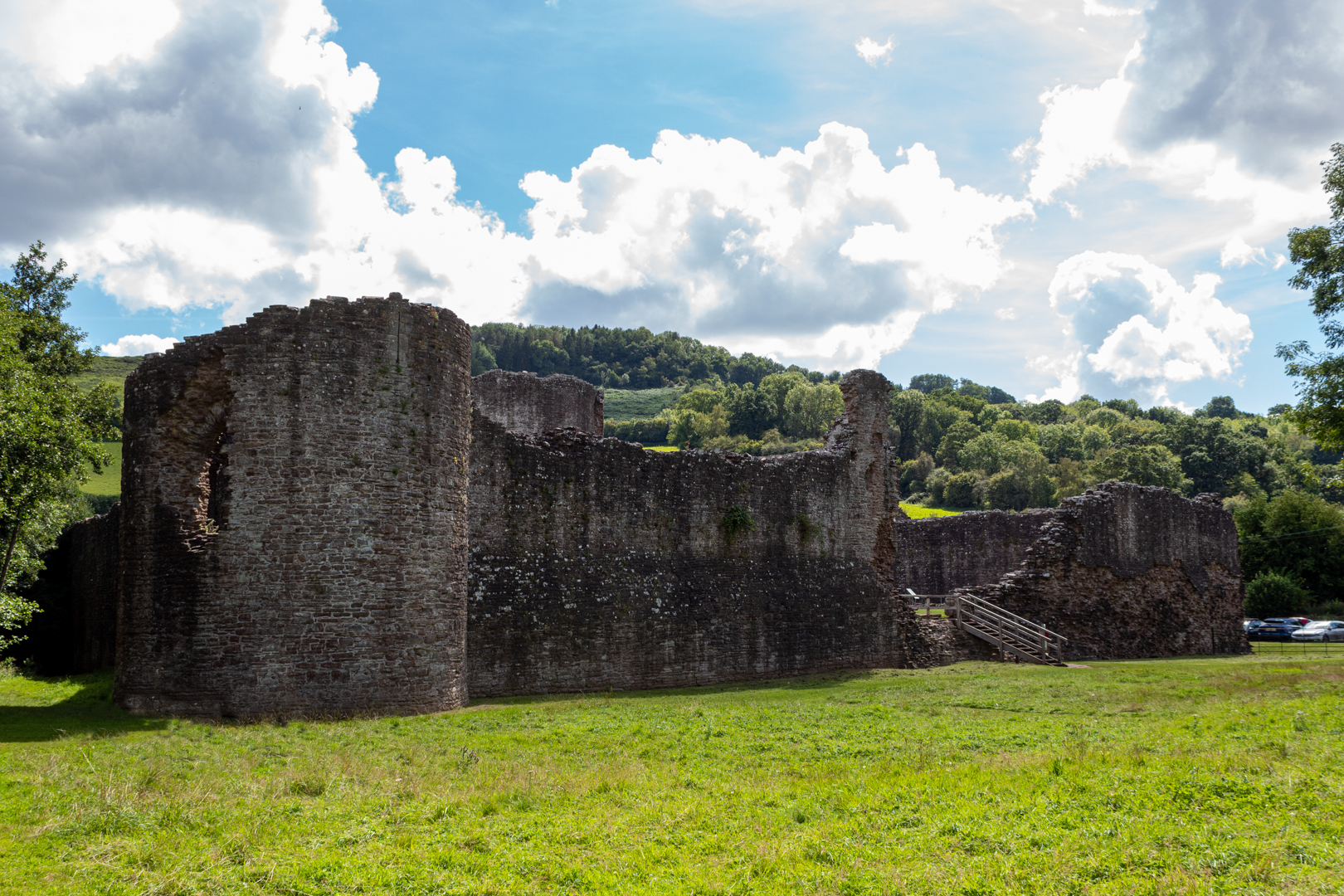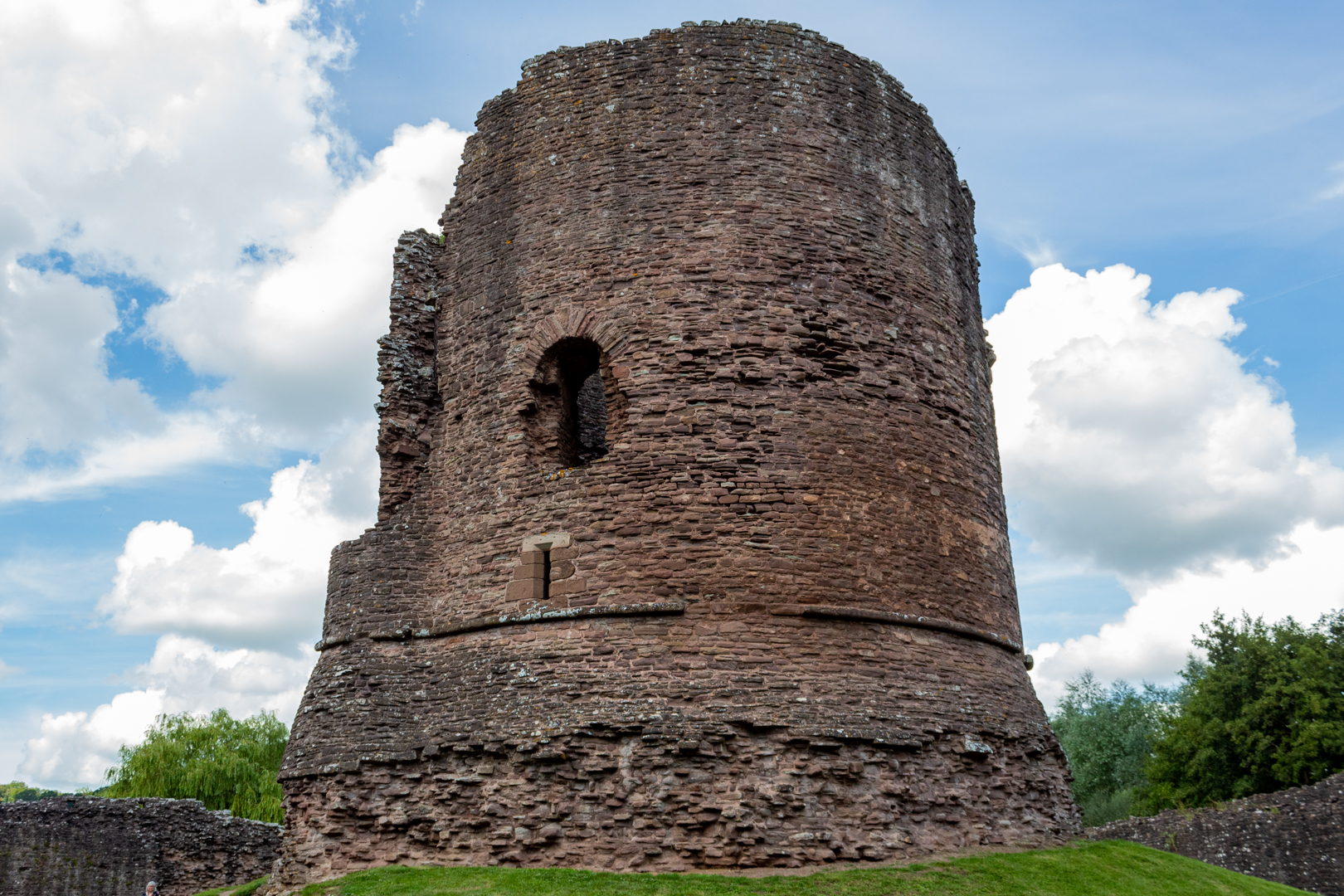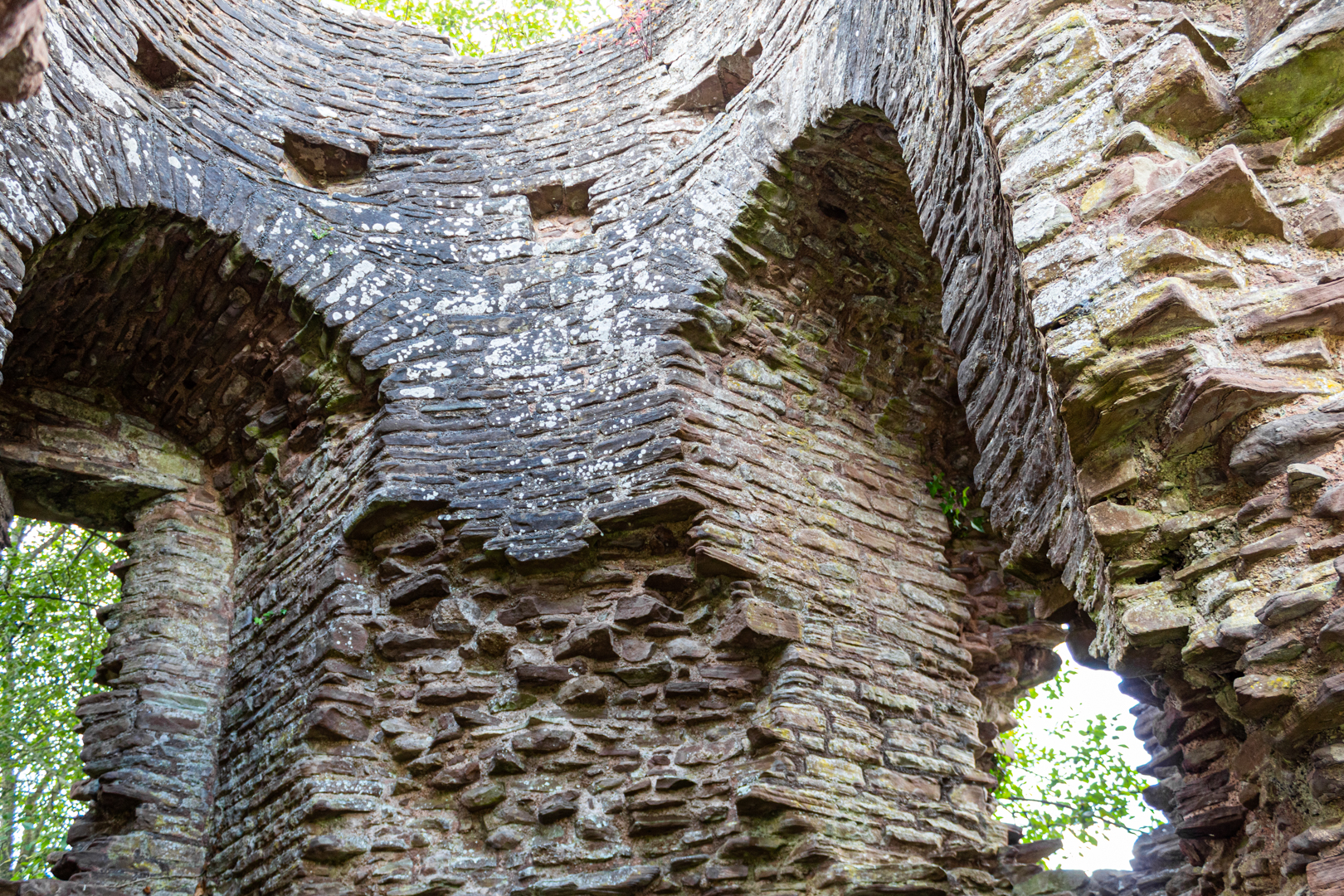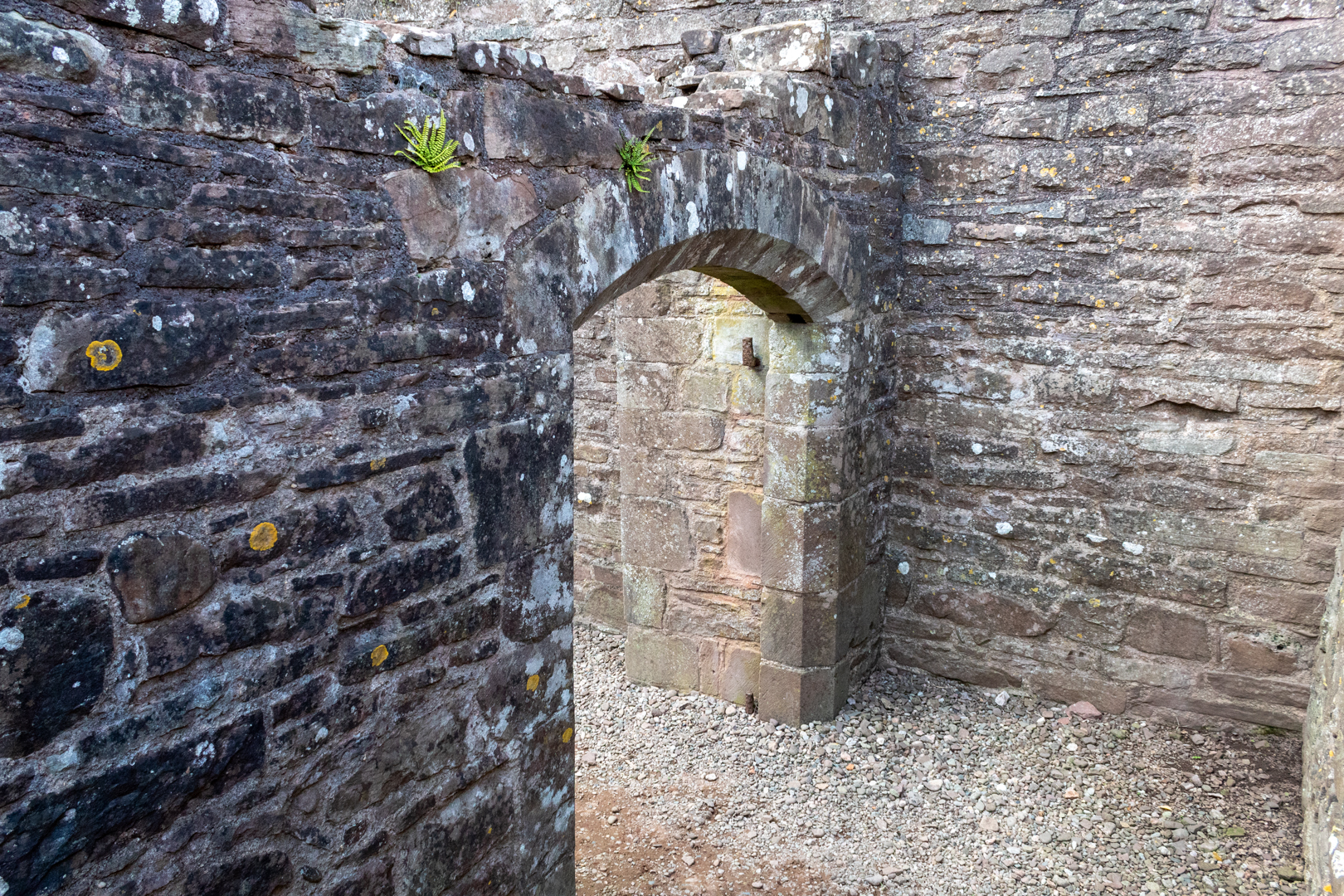Skenfrith Castle (Welsh: Castell Ynysgynwraidd) is an
ancient medieval fortress with a substantial central tower.
Visit Date August 2023
Commissioned by William Fitz Osbern, the Earl of Hereford, in the early 12th century the castle comprised earthworks with timber defences.
What is left of the remains is the later constructed fortress by Hubert de Burge in the 13th century.
Built on an earthen mound this structure was one of the ‘Three Castles of Gwent’ (along with Grosmont and White Castle)
Controlling a large area of Gwent the three castles guarded the border country between The river Wye and the Black Mountains with Skenfrith Castle overlooking one of the main routes between England and Wales on the banks of the river Monnow.
In 1135, a major Welsh revolt took place and in response, King Stephen brought together Skenfrith Castle and its sister fortifications of Grosmont and White Castle to form a lordship known as the "Three Castles", which continued to play a role in defending the region from Welsh attack for several centuries.
Skenfrith was rebuilt in stone. In 1201, King John gave the castle to a powerful royal official, Hubert de Burgh (Earl of Kent) who destroyed the old castle and rebuilt the rectangular outer walls with the round keep and towers we can see today.
Hubert fell from power in 1232 and was stripped of the castles, which were placed under the command of Walerund Teutonicus
Walerund built a new chapel at the castle in 1244 and repaired the keep's roof
In 1267 the Castle along with the other two castles were granted to Edmund, the Earl of Lancaster
King Edward I' (20 November 1272 – 7 July 1307). In his conquest of Wales in 1282 removed much of the castle's military utility and saw the demise of the importance of the castle and by 1538, it had fallen into disuse and ruin.
In 1825, the Three Castles were sold off to Henry Somerset, the Duke of Beaufort. Skenfrith was eventually acquired by the lawyer Harold Sands, who carried out some conservation of the site; he went on to give the castle to the National Trust. Skenfrith was placed into the care of the state in 1936,
Skenfirth Castle is managed by Cadw
(Cadw is the historic environment service of the Welsh Government and part of the Tourism and Culture group. Cadw works to protect historic buildings and structures, landscapes and heritage sites)
A visit to the castle would be enhanced by seeking out a disused mill on the south-eastern side of the castle. Much later than the castle of course dated 1867 at the 1st-floor level of the SW side; the mill continued to function until 1990 although by that time the mill had been converted to electric power.
Visit Information: -
Google Reference: -
51.878293893054106, -2.790379413287163
Google Search term:
Skenfrith Castle
What Three Words reference: -
///parked.sporting.help
OS Details: -
SO 45697 20264 : Altitude:141 ft
Additional information.
There is parking here (51.87809680428079, -2.790591909573205) for a a dozen cars or so and the place is easy to visit.
Off the B4347 from Monmouth and on to the B4521 takes you to Skenfrith.
There are no facilities at the site.
The site is popular in the summer months with locals sunbathing and swimming in the river.
A full list of blogs can be found at my website










0 comments:
Post a Comment